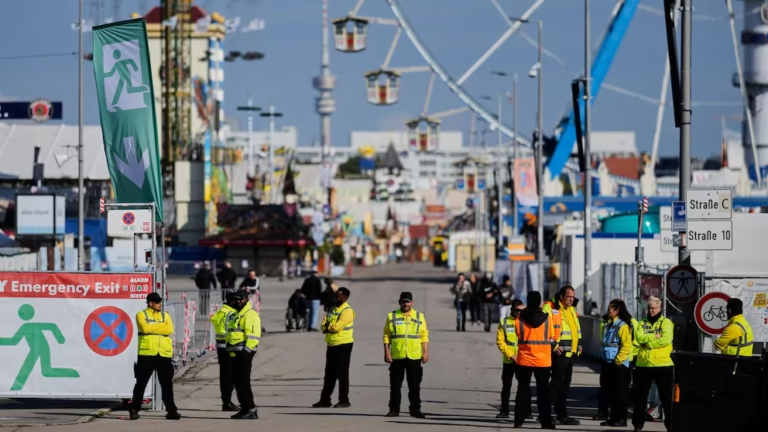Table of Contents
When the typhoon soaked Hong Kong, the entire city paused. Before Wipha lost strength and shifted south, it delivered a heavy blow: torrential rains, fierce winds, and chaos across transportation, business, and daily life. Streets emptied. Flights grounded. The usually vibrant city turned into a storm zone.
From early morning, the skies were dark. A gloomy tension hovered over neighborhoods. Many residents stayed home. Schools were closed. Shops didn’t even bother opening. Local authorities had already issued high-level warnings, urging everyone to stay indoors and prepare for disruption.
Massive Impact from the Soaking Typhoon
The storm’s effects were severe. Over 400 flights were delayed or canceled, stranding hundreds at the airport. Trees were ripped from the ground, blocking roads and damaging vehicles. Power outages hit various districts as power lines snapped under pressure. In some areas, internet and phone service went down completely.
Public transit suffered too. Key MTR train lines were suspended. Ferries between islands stopped operating. Roads in low-lying areas flooded quickly. Some neighborhoods, especially in Kowloon and the northern parts of Hong Kong Island, saw water rise to knee-level.
Life on Hold During the Peak Storm
As the typhoon soaked Hong Kong, daily life halted. Residents in flood-prone zones were evacuated. In high-rise buildings, the howl of wind against windows created a nerve-wracking atmosphere. On social media, people shared videos of leaking ceilings, shattered glass, and pets trembling from the noise outside.
Businesses shut down. Government offices paused operations. Deliveries were suspended. Even emergency crews had to navigate cautiously through flooded streets and debris.
Still, there was a strong sense of unity. Neighbors helped each other. Communities shared resources. Those who could open their doors did so for evacuees.
Aftermath: Cleaning Up and Counting Losses
Once Wipha shifted south and the skies cleared, the damage was undeniable. Mud-covered streets, scattered debris, and crushed vehicles told the story of a long, harsh night. City crews jumped into action immediately. Teams worked through the day clearing roads and restoring power.
But recovery wasn’t instant. Many homes and shops remained waterlogged. Transportation resumed gradually. Power wasn’t fully restored for several hours in some neighborhoods. Analysts estimate economic losses could reach over HK$2 billion, especially considering two days of halted business and tourism.
Read More: Hong Kong record rainfall, flooding after ‘black’ storm hits
The hospitality sector was hit hard. Hotels faced cancellations. Tourists postponed travel. Local markets saw reduced activity. It wasn’t just the storm that hurt—it was the domino effect of the aftermath.
A Wake-Up Call for a City Always Moving
This event reminded everyone just how vulnerable even the most prepared cities can be. Hong Kong has strong infrastructure and early-warning systems, but this storm still caused major disruption. Government officials promised to review emergency response strategies, including improving drainage systems and faster evacuation support.
Citizens responded with praise and criticism alike. While many were thankful for early alerts and emergency shelters, others pointed out delays in response in certain high-risk areas. There’s clear momentum now for stronger disaster readiness.
How Residents Can Prepare for Future Storms
There are lessons to carry forward. First, always monitor official weather updates. Don’t rely on rumors or unverified social posts.
Second, stock up on essentials early. Flashlights, clean water, dry food, and power banks should always be ready.
Third, secure loose items in balconies and yards before a storm hits. Flying debris can cause serious injuries and damage.
And lastly, build local community ties. Storms test more than just infrastructure—they test how well people support each other under pressure.
What This Storm Taught Us
Typhoon Soaks Hong Kong wasn’t just a weather story—it was a test of resilience. From the soaked streets to the sky-high apartments shaking under storm pressure, this event showed how nature can still stop one of the world’s busiest cities in its tracks.
Read More: Violence Erupts Again: Thai-Cambodian Border Tensions Rise
But the story isn’t about fear. It’s about readiness, community, and bouncing back. Hong Kong proved once again that even under pressure, its people move fast, help one another, and rebuild stronger. The storm faded—but the strength shown during it will last far longer.



https://shorturl.fm/ITV5V
https://shorturl.fm/YOZZ7
https://shorturl.fm/NR2u3
https://shorturl.fm/d4KCM
https://shorturl.fm/x3KYa
https://shorturl.fm/HfmZn